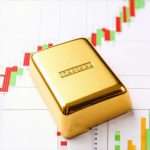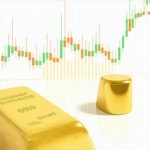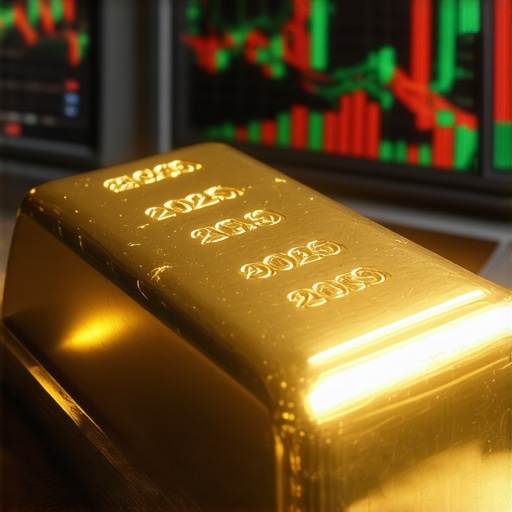Understanding the Gold Market Landscape for 2025
The gold market has always been a focal point for investors looking for stability and growth. As we approach 2025, understanding the dynamics of this market is crucial for making informed investment decisions. Insights gleaned from market analysis can provide valuable foresight into price movements, demand trends, and potential investment opportunities. In this article, we will explore the essential elements that shape the gold market and what investors can expect moving forward.
The Role of Economic Indicators in Gold Prices
Economic indicators play a pivotal role in shaping the gold market. Factors such as inflation rates, interest rates, and currency strength directly influence gold prices. For instance, when inflation rises, investors often flock to gold as a hedge against currency devaluation. Similarly, lower interest rates typically lead to increased demand for gold, as the opportunity cost of holding non-yielding assets diminishes. Keeping an eye on these economic indicators is essential for predicting future price movements. For a deeper dive into how these factors interact, check out our post on key factors impacting gold prices in 2025.
Geopolitical Events and Their Impact on Gold Demand
Geopolitical events have historically influenced gold demand. Political instability, conflicts, and changes in government policies can all lead to increased uncertainty in the financial markets, driving investors towards gold as a safe haven. As we look towards 2025, staying informed about global events and their potential impact on gold prices is critical. For example, understanding how geopolitical tensions affect investor sentiment can provide insights into market volatility. To learn more about this aspect, refer to our article on the impact of geopolitics on gold prices.
The Future of Gold Demand Trends
Looking ahead, several trends are expected to shape gold demand in 2025. Factors such as technological advancements in gold mining, changes in consumer preferences, and the evolving landscape of investment vehicles will all play a role. For instance, the rise of gold-backed exchange-traded funds (ETFs) has made gold investment more accessible to the average investor, which could lead to increased demand. To gain insights into how these trends might unfold, consider reading our guide on investing in gold ETFs for 2025.
Moreover, understanding the supply side of the gold market is equally important. Factors such as mining output and production costs can significantly influence gold prices. As production becomes more challenging due to environmental concerns and regulatory pressures, supply constraints may drive prices upward. For a comprehensive analysis of these dynamics, see our post on gold supply and demand insights.
Investment Strategies to Consider in 2025
As we navigate the complexities of the gold market, it’s essential to adopt investment strategies that align with the evolving landscape. Diversification remains key; incorporating a mix of gold investments, such as physical gold, gold stocks, and ETFs, can help mitigate risks. For tailored strategies on how to maximize your returns in gold investments, check out our article on top gold investment tips for 2025.
Analyzing Gold Trading Techniques for Better Profit Margins
As investors prepare for 2025, understanding effective gold trading techniques becomes increasingly vital. The ability to analyze market conditions and identify profitable opportunities can significantly impact investment success. Traders often use various strategies, including technical analysis, which involves examining historical price patterns to forecast future movements. For those interested in mastering these skills, our post on insights into gold trading techniques offers valuable information.
Understanding the Importance of Timing in Gold Investments
Timing is everything in the gold market. Knowing when to enter or exit a position can mean the difference between substantial profits and significant losses. Historical price trends can serve as a guide, but external factors such as economic news, geopolitical events, and seasonal fluctuations must also be considered. Investors should regularly assess market conditions to determine the optimal times for buying or selling. To stay updated on market trends, visit our article on gold market analysis.
Physical Gold vs. Gold ETFs: Which is Right for You?
Choosing between physical gold and gold ETFs is a critical decision for investors. Physical gold, such as coins and bars, offers tangible value and can serve as a hedge against inflation. However, it comes with storage and insurance costs. On the other hand, gold ETFs provide liquidity and ease of trading but may lack the intrinsic value associated with physical gold. Each option has its advantages and disadvantages, and the right choice depends on individual investment goals. To explore this topic further, check out our comprehensive guide on physical gold vs. gold coins.
The Role of Gold in Portfolio Diversification
Gold plays a crucial role in portfolio diversification, acting as a counterbalance to more volatile assets such as stocks. By incorporating gold into an investment portfolio, investors can reduce overall risk and enhance potential returns. This is particularly important in uncertain economic climates where market fluctuations can impact stock performance. For insights on how to effectively include gold in your investment strategy, refer to our guide on the role of gold in portfolio diversification.
Key Trends Influencing Gold Prices in 2025
As we look towards 2025, several key trends are anticipated to influence gold prices. The ongoing evolution of central bank policies, particularly regarding gold purchases, will play a significant role. Increased central bank buying can signal confidence in gold as a safe asset, driving prices higher. Additionally, changes in consumer demand, especially in emerging markets, will impact how gold is viewed as an investment vehicle. For more on these trends, see our article on the impact of central bank gold purchases on prices.
Moreover, technological advancements in mining and refining processes can affect production costs and subsequently influence prices. As environmental concerns grow, the gold mining industry will need to adapt to more sustainable practices, which could further affect supply dynamics. To delve deeper into these aspects, our post on gold supply and demand insights is a must-read.
Evaluating Gold Investment Vehicles: Options for 2025
As investors gear up for 2025, evaluating the various gold investment vehicles available becomes paramount. Different options cater to diverse investment strategies and objectives. Beyond physical gold and gold ETFs, investors can also explore gold mutual funds and gold mining stocks. Each of these vehicles presents unique advantages and risks that investors must understand. For instance, gold mutual funds allow for professional management of investments, providing access to a diversified portfolio of gold-related assets. To learn more about these options, check out our guide on investing in gold mutual funds.
The Impact of Interest Rates on Gold Investments
Interest rates profoundly affect gold investments. Generally, when interest rates are low, gold becomes more attractive as it does not yield interest. However, as rates rise, the opportunity cost of holding gold increases, often leading to decreased demand. Investors should closely monitor the monetary policies of central banks and their anticipated decisions regarding interest rates. For insights into how these trends will play out, refer to our article on the impact of central bank policies on gold prices.
Understanding Gold Market Sentiment: The Role of Investor Psychology
Investor sentiment can significantly sway the gold market. Factors such as fear of economic instability or geopolitical unrest can drive demand for gold as a safe-haven asset. Conversely, rising confidence in the stock market may lead to diminished interest in gold. Keeping a pulse on market sentiment can help investors make informed decisions, especially in volatile conditions. To further explore the psychological aspects of investing in gold, check out our post on gold demand trends.
Analyzing the Role of Gold in Inflationary Contexts
Gold has historically served as a hedge against inflation, maintaining its value when purchasing power declines. As inflation rates fluctuate, understanding how gold reacts can help investors protect their wealth. In 2025, with inflation concerns likely to persist, many may turn to gold to safeguard their assets. This makes it crucial to analyze gold’s role as an inflation hedge and its performance during inflationary periods.
Technological Innovations in Gold Mining: Implications for Investors
Technological advancements are transforming the gold mining industry, leading to more efficient extraction and processing methods. As companies adopt new technologies, production costs may decrease, potentially affecting gold prices. Investors should stay informed about these innovations and their impacts on supply dynamics. For a deeper understanding of how these factors influence the market, refer to our article on gold supply and demand insights.
Exploring the Future of Gold Trading Strategies
As we move towards 2025, developing effective gold trading strategies is essential for maximizing returns. Traders often use a combination of technical and fundamental analysis to make decisions. Understanding market indicators, such as gold price fluctuations and trading volumes, can provide critical insights into timing trades effectively. For an in-depth look at these strategies, check out our article on assessing gold trading techniques.
The Importance of Research in Gold Investments
As investors prepare to navigate the complexities of the gold market in 2025, conducting thorough research is paramount. Understanding market dynamics, historical price movements, and emerging trends will equip investors with the knowledge necessary to make informed decisions. Utilizing resources such as market analysis on key factors can help investors identify potential opportunities and risks related to gold investments.
Emerging Markets and Their Influence on Gold Demand
Emerging markets are expected to play a significant role in shaping gold demand in 2025. Countries like India and China, with their growing middle classes and increasing wealth, are likely to drive higher consumption of gold for both jewelry and investment purposes. Understanding how these markets function can provide valuable insights into global demand trends. For a deeper exploration of how demand affects prices, check out our article on analyzing gold demand trends.
Evaluating the Risks Associated with Gold Investments
Investing in gold, while often viewed as a safe haven, comes with its own set of risks. Factors such as price volatility, regulatory changes, and shifts in investor sentiment can impact the value of gold assets. Therefore, it’s essential for investors to evaluate these risks carefully. For strategies to mitigate these risks, refer to our comprehensive guide on maximizing gains through gold mining stocks.
Gold Mining Stocks: A Viable Investment Option
Gold mining stocks are an alternative way to gain exposure to the gold market. Investing in companies that extract gold can provide leveraged returns when gold prices rise. However, understanding the operational and financial health of these companies is crucial. Investors should consider factors such as production costs and management expertise. For more insights on evaluating mining stocks, see our article on evaluating gold stocks.
Investment Timing: Understanding Market Cycles
Timing investments in gold can significantly affect returns. Understanding market cycles—periods of growth and decline—can provide investors with the tools needed to optimize their buying and selling strategies. Awareness of historical trends and current market conditions will help in making timely investment decisions. For a deeper understanding of market cycles, check out our guide on navigating the market in 2025.
Utilizing Technical Analysis for Gold Investments
Technical analysis involves examining price charts and trading volumes to forecast future price movements. This method can be particularly useful for short-term traders looking to capitalize on market fluctuations. Mastering this technique can help investors make more informed trading decisions. For effective strategies on technical analysis, consider reading our article on assessing gold trading techniques.
Conclusion: Preparing for the Future of Gold Investments
As we look ahead to 2025, the gold market presents both opportunities and challenges for investors. By understanding market dynamics, evaluating investment strategies, and conducting thorough research, investors can position themselves for success. Whether considering physical gold, ETFs, or mining stocks, staying informed will be key to navigating this evolving landscape.
Comprehensive FAQ Section on Gold Investments
What factors influence gold prices in 2025?
The price of gold in 2025 will be influenced by various factors, including economic indicators such as inflation and interest rates, geopolitical events, central bank policies, and shifts in consumer demand, particularly from emerging markets.
How can I invest in gold in 2025?
Investors can choose from several options to invest in gold, including purchasing physical gold like coins and bars, investing in gold exchange-traded funds (ETFs), gold mining stocks, and gold mutual funds. Each option has its unique advantages and risks.
Is physical gold a good investment in 2025?
Physical gold can be a good investment as it provides tangible value and serves as a hedge against inflation. However, investors should also consider storage and insurance costs associated with owning physical gold.
What are gold ETFs, and how do they work?
Gold ETFs are investment funds that hold physical gold or gold-related assets and trade on stock exchanges. They provide investors with an easy way to gain exposure to gold prices without the need for physical storage.
How does inflation impact gold investments?
Gold is traditionally seen as a hedge against inflation. During periods of high inflation, gold prices often rise as investors seek to preserve their purchasing power. Understanding the correlation between inflation and gold can help investors make informed decisions.
What are the risks associated with investing in gold?
Investing in gold carries risks such as price volatility, regulatory changes, and shifts in investor sentiment. It is essential for investors to evaluate these risks carefully and consider diversifying their portfolios.
How can I diversify my gold investments?
Diversifying gold investments can involve a mix of physical gold, gold stocks, ETFs, and mutual funds. This strategy can help mitigate risks and enhance potential returns by spreading exposure across different forms of gold investments.
What role do central banks play in the gold market?
Central banks significantly influence the gold market through their buying and selling activities. Increased purchases by central banks often signal confidence in gold as a safe-haven asset, which can drive prices higher.
What are gold mining stocks, and are they a good investment?
Gold mining stocks represent shares in companies that extract gold. They can offer leveraged returns in rising gold price environments, but investors should assess the operational and financial health of the companies before investing.
How can I stay updated on gold market trends?
Investors can stay informed about gold market trends by following financial news, subscribing to investment newsletters, and reading market analysis articles that provide insights into key factors impacting gold prices.
Authority Resources for Gold Investments
To deepen your understanding of the gold market and investment strategies, consider exploring the following trusted resources:
- World Gold Council – A leading authority on gold market research and investment.
- Investopedia – Comprehensive articles on gold investing and market dynamics.
- Kitco News – Updated news and analysis on gold prices and market trends.
- Bloomberg – Financial news platform with insights into commodity markets, including gold.
- CNBC – Business news network providing updates on gold and other investments.
Conclusion: Preparing for the Future of Gold Investments
As we look ahead to 2025, navigating the gold market presents both opportunities and challenges for investors. By understanding market dynamics, evaluating investment strategies, and conducting thorough research, investors can position themselves for success. Whether considering physical gold, gold ETFs, or mining stocks, staying informed will be key to making informed decisions in this evolving landscape. Investing in gold remains a strategic choice for those seeking to diversify their portfolios and hedge against economic uncertainties.










The article’s exploration of how economic indicators influence gold prices really resonated with me. I’ve noticed in my own investment experience that inflation and interest rate movements often signal shifts in gold’s appeal as a safe haven. However, what I find particularly challenging is balancing the timing—knowing when geopolitical tensions or supply constraints might tip the scales in favor of gold. For example, the rise of gold ETFs has intrigued me; they seem to offer a more liquid way to invest without the hassles of physical storage, yet I wonder how their demand influences the actual physical gold market and price stability. Another aspect that caught my attention is the growing role of emerging markets like India and China driving demand. It makes me think about how global economic shifts could affect gold pricing and availability. I’m curious if others have found effective ways to integrate these insights—economic signals, geopolitical awareness, and investment vehicle choices—into a cohesive strategy for 2025? How do you navigate these complexities when deciding on allocations between physical gold, ETFs, or mining stocks?
Marcus, you bring up some excellent points about the intricacies of balancing different factors when investing in gold for 2025. From my experience, one effective approach has been to treat gold investment as a dynamic part of a broader portfolio rather than a static asset. For example, when geopolitical uncertainties rise, I tend to shift a higher proportion toward physical gold since its tangible nature feels more secure in turbulent times, despite the storage costs. Conversely, during more stable periods with favorable economic indicators, I lean more on gold ETFs and mining stocks, which offer liquidity and growth potential.
Regarding the impact of gold ETFs on the physical market, while ETFs increase accessibility for retail investors and can lead to higher demand overall, they may also cause price fluctuations due to their trading nature. However, the interplay between ETFs and physical gold demand is complex and influenced by factors like central bank purchases and supply chain constraints.
As for emerging markets like India and China, their growing middle class indeed plays a pivotal role in driving global demand. I’ve noticed that keeping abreast of policy changes and consumer trends in these regions helps anticipate shifts in demand and price movements.
I’m curious, how do others balance the immediacy of trading opportunities with the long-term stability aspects of physical gold in their portfolios? Any strategies that help navigate this balance would be insightful.